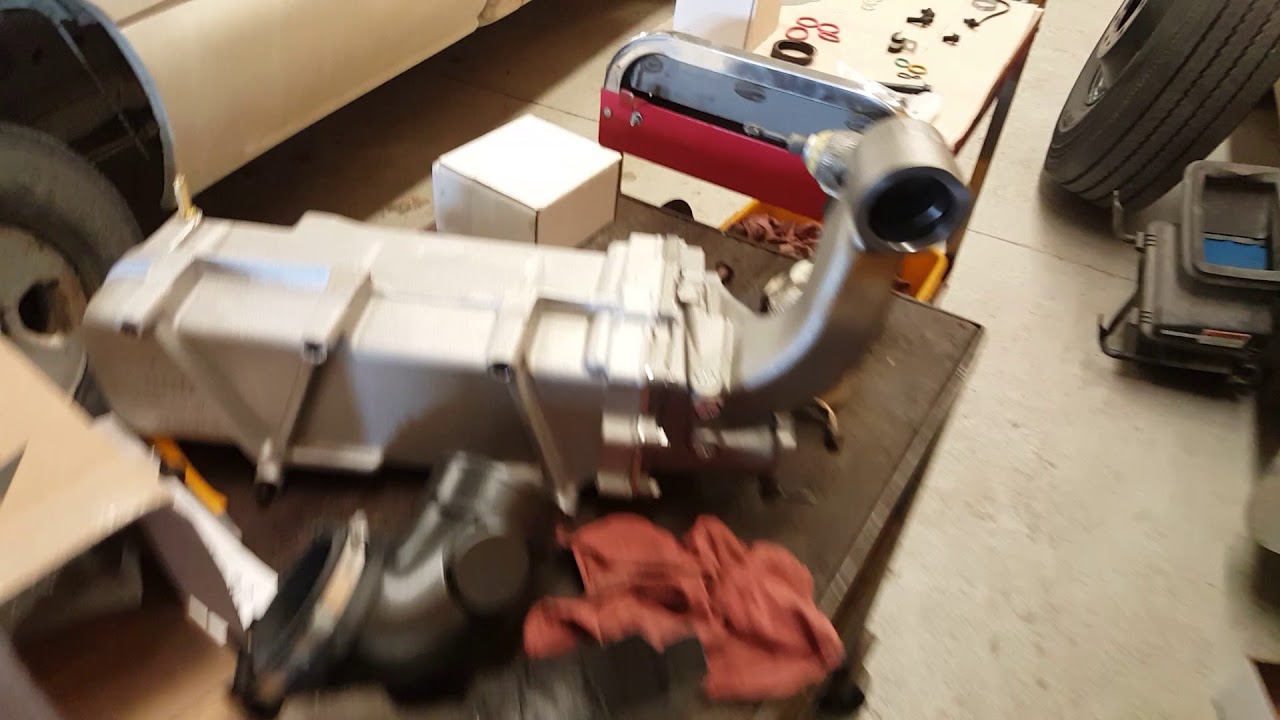As you can see the EGR cooler from this Navistar DT MaxxForce engine is massive and it weighs I’m guessing around 50 pounds. Why is it so large? Well the main reason was to circulate more cooled exhaust gases to the air intake system and reduce emissions to meet the demanding emission standards set by the EPA.
This engine has been out of production for a few years now because it could not keep up with EPA requirements. They want zero emissions around 2020 so the challenge is on with current engine manufacturers. Caterpillar, Mercedes and Navistar dropped out of the race in the medium duty market.
We are all Cummins ISB now since 2014 and these engines have proved themselves with very few problems and great reliability. The only extra step owning these engines is keeping enough diesel exhaust fluid around to add to the DEF reservoir on the bus which in turn creates the chemical reaction needed with the emission system to counteract against harmful oxides of nitrogen.
What we have experienced with EGR cooler failures is the coolant blows out of the cooling system expansion tank caused by a pressure build up from a leaking EGR cooler heat exchanger. Since the radiator cap is set at 10 psi and the pressure from cooler failures can get as high as 25 psi a substantial amount of coolant blows out of the radiator cap. Coolant in the oil will also be present in our oil sample reports.
We try to prevent air in the coolant by filling the system under a vacuum using the Navistar coolant tool. There will be no air present which causes the heat damage to the cooling system parts. Also we check the chemical balance of the coolant every oil change and make sure the nitrate level is safe. Cummins 2016 engines and newer are using a long life coolant that is organic and nitrate free. It’s not cheap but can go a long way compared to the regular antifreeze.
This engine will be a force to be reckoned with since one of our 2011 models has already required an inframe due to this same problem caused by coolant in the oil creating a zero compression reading in one cylinder (coolant displaces lubricant to the cylinder walls). Luckily this was repaired under warranty.
However since this video was posted our current EGR cooler engine has no compression on one cylinder as well. After the repair we fired it up and it had a dead miss. Unfortunately no warranty to speak of left on this bus. We will have to remove the cylinder head and do an inspection.
It will most likely mean an overhaul. The removable liners will make it easier for us not having to pull the complete engine. I’m disappointed to say the least that a six year old engine that doesn’t pull a heavy load every day has failed on us. We have several of these models so it’s time to closely monitor the EGR coolers and the coolant to prevent another major failure.







